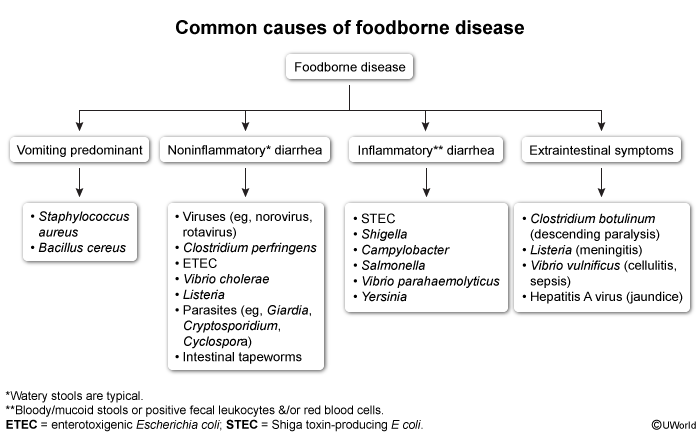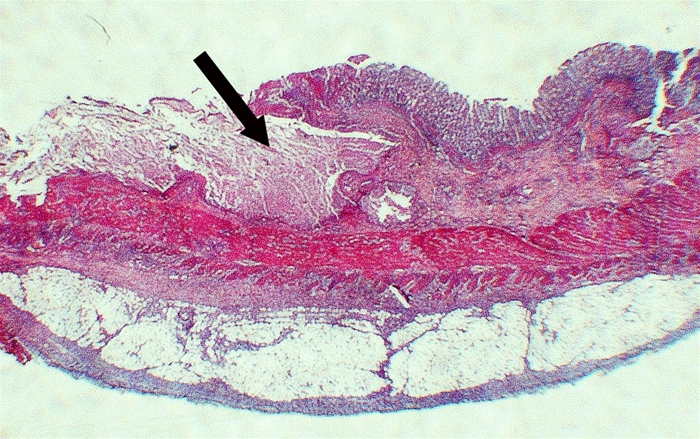Foodborne Illness (Food Poisoning)
Article Sections
Introduction
Foodborne illness (food poisoning) results from the ingestion of pathogens (bacterial, viral, parasitic) or toxins in contaminated food or beverages. Foodborne illnesses commonly present with gastrointestinal symptoms, but symptoms can vary depending on the causative agent and host factors (eg, age, immune status). Although most foodborne illnesses are typically self-limited, transmission even in the setting of mild disease can pose significant public health risk, especially if transmitted to vulnerable populations who may suffer from more severe disease.
Pathophysiology
The pathophysiology of foodborne illness varies by pathogen but generally involves toxin production, direct infection, or both:
Toxin-mediated illnessesSome bacteria such as Staphylococcus aureus and Bacillus cereus produce preformed toxins in food, causing rapid onset of vomiting after exposure. Other toxins such as
Continue Learning with UWorld
Get the full Foodborne Illness (Food Poisoning) article plus rich visuals, real-world cases, and in-depth insights from medical experts, all available through the UWorld Medical Library.
Figures

Images
